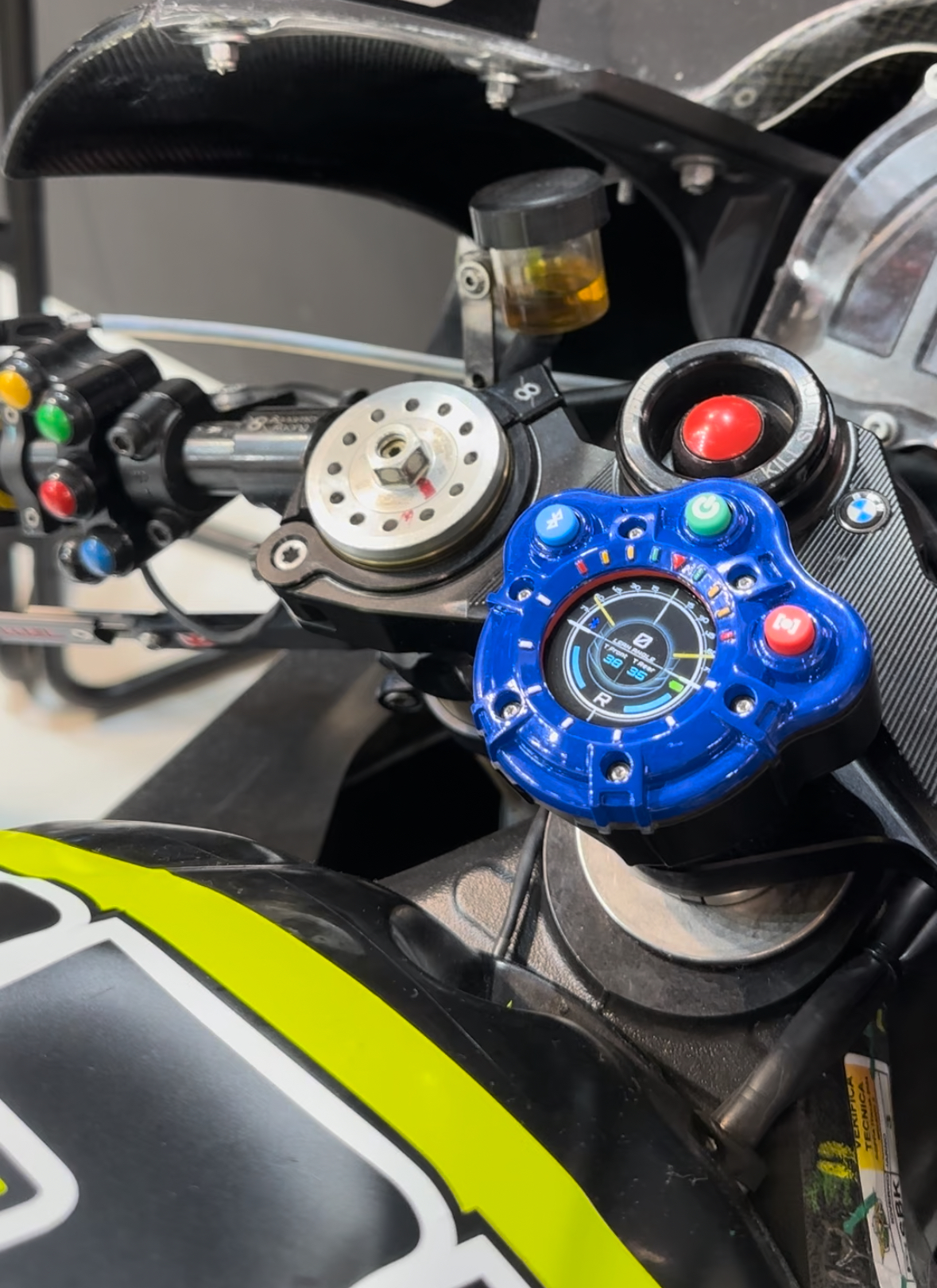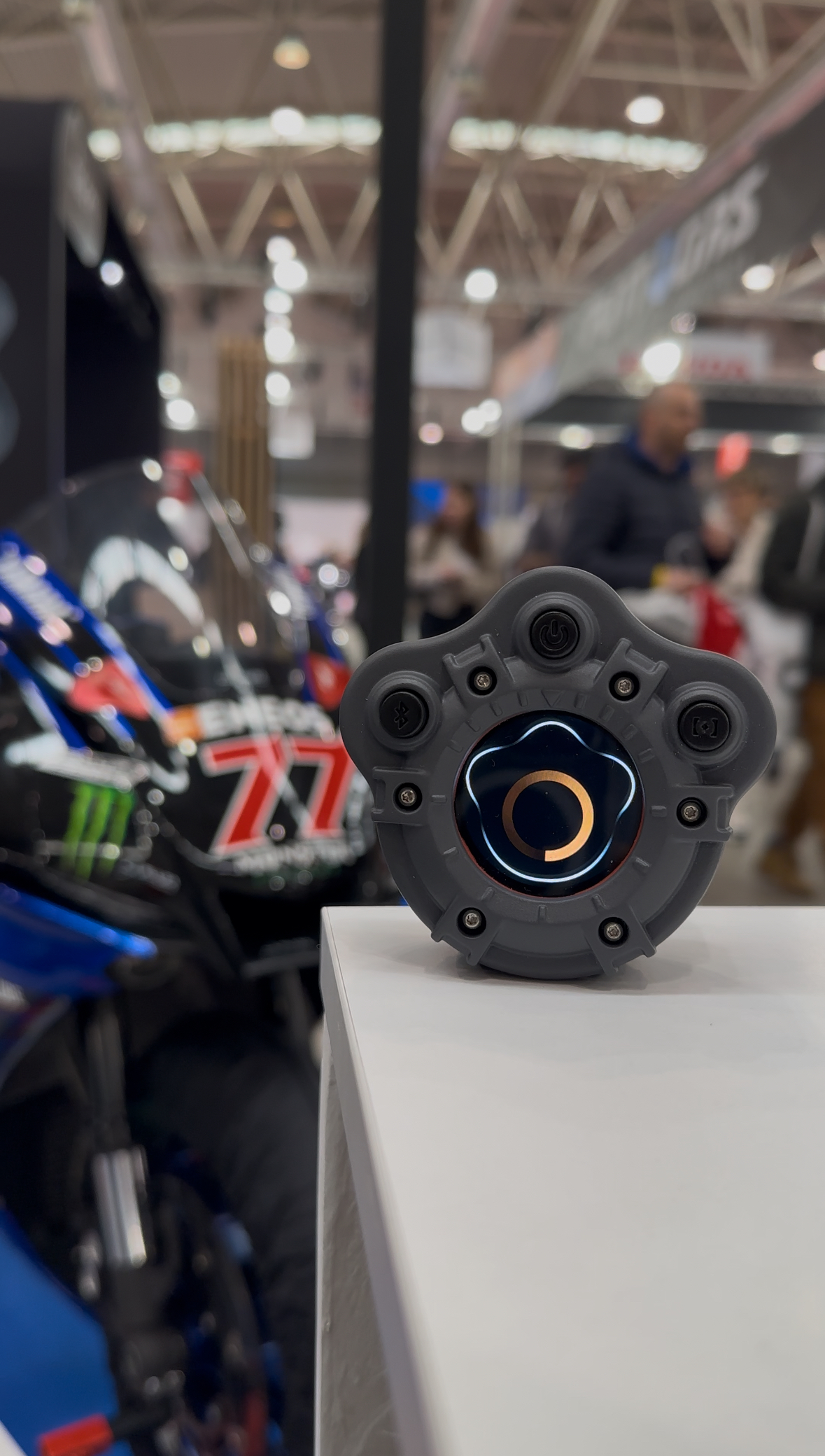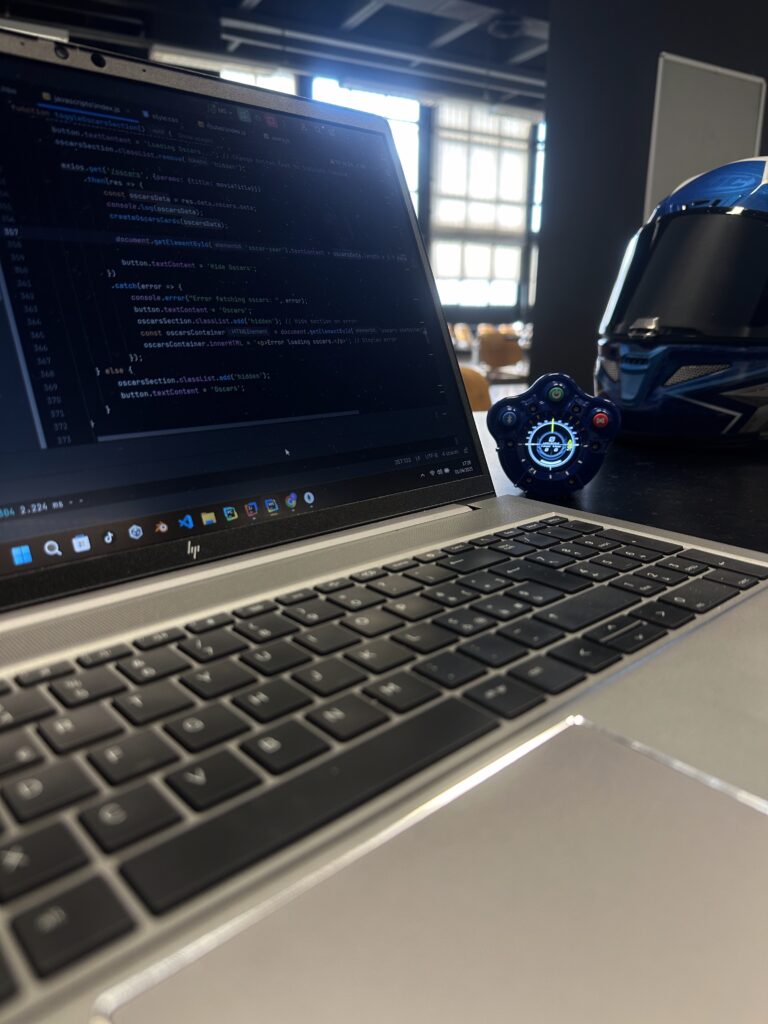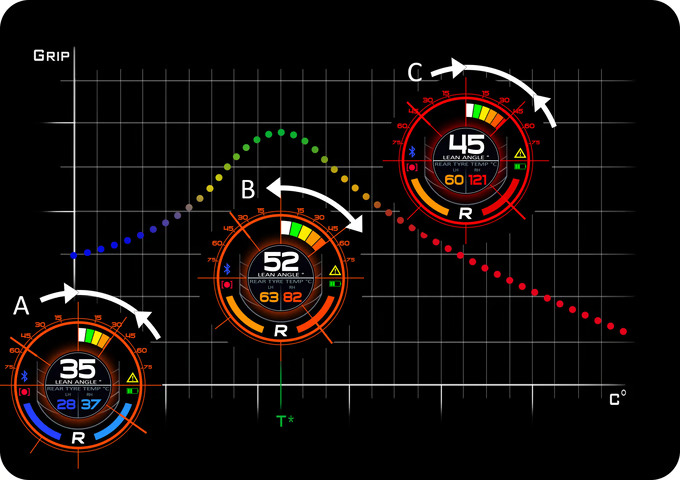Insights
What is Quasar
QUASAR is an Adaptive Inclinometer that estimates the T-Grip and processes, in relation to this, the safe amplitude of the lean angle. The thermal peformance status of the tires is displayed on the screen in a colorful and immediate way so as to give you all the information you need in real time for safer and better performance riding. An advanced multifunctional electronic system packed for you in a sleek and sporty new High-Tech gadget suitable for all bikes and riders.

How Quasar Works
With additional Sensors placed on the bike, the device wirelessly receives telemetry data such as tire PRESSURE and TEMPERATURES, both internal and external. An advanced microprocessor processes all the acquired information and estimates, in real time and conservatively, the width of the safe lean angle (L.A.R. Lean Angle Range ) based on theoretical grip conditions. Through specific graphics, the tool ADAPTIVELY depicts the varying limits of the critical lean angle based on the estimated T- Grip, also considering the type of tire compound defined during SET-UP via a dedicated initialization APP. The Rider also has the ability to record telemetry data and graphs of their session

Let's go into the details...
The performance level of your tires depends on many factors starting with their type, compound and intended use: road or track. But the factors that most influence a tire are Temperature and Pressure. In particular, the higher the performance required according to the type of use, the narrower the Thermal Window that identifies the "Operating Temperature" around which the Tire expresses the best of its characteristics in terms of Grip.


A state-of-the-art road sport tire, which is also generally used on the track, shows an "Exercise Bell" similar to the one shown above.
Once the type of tire (road or track) and its compound (soft, medium, hard) have been set via APP, this curve will be processed in real time by QUASAR providing with adaptive graphics, the narrower (A or C) or wider (B) Lean Angle Range, depending on the estimated Temperature within the tire compound.
Product successfully launched at EICMA 2024
MBE 2025 & MOTODAYS 2025



